Our body is the most unique and ultimate creation of God. Hence, it is our prime duty and responsibility to keep it healthy, not only physically, but mentally as well.
Human personality, is not just the physical body, it is much beyond that. It is a complex system, which includes body, breath, mind, intellect, bliss and functions as a whole. These are nothing but different forms of energy that intermix and interchange. We need to have a broader outlook to understand its energy system, which gives us a deep understanding of the holistic approach to health and healing.
Pancha Kosha – the 5 layers
The Pancha Kosha concept comes from Taitteriya Upanishad. Pancha means five and kosha means layer. We can compare these koshas with onion peels, one layer over the other. As we peel the body layers, we come closer and realise our true potential.
Koshas are the road map that lead us to the consciousness of these layers, where lies the inner bliss. We all are born as pure, loving, peaceful and blissful being, but in the journey of life, we have drifted away from our original nature. Thus, our goal is to consciously work on each body layer so that we come closer to our original nature.
Ancient Yogis, Sages, Hrishis, Munis used to go and live in caves, mountains or hills to meditate, discover themselves and then, ultimately, connect with the divine.
In the 21st century, practically speaking, most of us do not want to leave everything and go to the hills or mountains. Even by leading a normal life, if we become aware and understand the pancha kosha, layer after layer, we will realise that, what we were actually looking for outside, lies right within us.
Example:
If you are wearing a white outfit for Holi (the festival of colours) and your friends drench you in different shades of colour, would you be able to recognise the original colour of your dress?
It will require several washes to see the original colour. We can relate these colours to anger, greed, impatience, fear, anxiety, envy, comparison. Therefore, it needs thorough cleansing (washing) to reflect our true identity.
We can balance our lives by integrating consciousness and energy into a harmonious, healthy and holistic personality. This is just the beginning of this multi-layered inward journey, which starts with the body and becomes more subtle (Sukshma), while passing through the different body layers of awareness, which perhaps, we haven’t realised that even exists.
Let us unveil these layers…the Pancha Kosha….
1. Annamaya Kosha- The Physical/ Gross Layer
This is the first and outer layer of the Pancha Kosha. It is the visible layer, which consists of skin, flesh, fat, and bones.
Just as Universe is made up of five elements, our body is also made up of five elements namely- fire, air, space, earth and water. The “Human” word comes from the Latin word “Humas” which means earth. Author Richard Rohr wrote “Being human means acknowledging that we are made from earth and will return to earth”.
This layer is also called the food layer; not because it is made up of food (Anna) which we take in from earth; but because whatever we take in, will finally return to earth.
We need to take good care of this body layer by keeping it healthy, clean and free from toxins. Have a well-balanced diet, do asanas, walk and exercise on regular basis, right quality and right quantity is very important.
Ancient yogis used to practice asanas to increase their flexibility so that they could sit in meditation for hours without any physical discomfort. By practising yoga asanas we not only become aware of our body and its alignment but also become aware of the signals, which our body gives us about overall state of our health.
What we do at this level of Annamaya kosha, will affect the other body layers too.
2. Pranayama Kosha or the Energy Layer
This is the second of the Pancha Kosha – which is subtle and consists of Prana, the energy force, which governs all the vital functions and systems of our body. It is responsible for movement of our physical body; and at the mind level, the movement of thoughts.
It is the connecting link between the mind and body. In Pranayama kosha we have energy channels (which cannot be seen by naked eye), through which Prana flows. These channels are called Nadis.
There are 72,000 Nadis, which originates from the Navel and seven main Chakras (energy wheels) located along the spine, in this subtle body. Prana will not be able to flow freely if Nadis and Chakras are blocked. Blockages can be due to various reasons such as stress, anxiety, fear, anger, unhealthy lifestyle.
The Pranayama kosha is directly related to Annamaya kosha and any disturbance in this body layer will not only affect the Annamaya kosha but other koshas too.
Pranayama, yoga asanas and mudras (hand gestures) are very helpful in clearing the blockages of Nadis and Chakras and it enhances the flow of Prana throughout our body.
The aim of Pranayama is to prepare our mind before meditation; it helps us increase our focus. Ancient yogis used to meditate for long durations without food and water because they knew the art of tapping their internal energy.
3. Manomaya Kosha- The Mind Layer
This is the third of the five body layers or the Pancha Kosha, which is subtle and includes our thoughts, emotions, patterns and five senses.
Our mind is just like a blotting paper, which absorbs information and vibration through all five senses. On an average 60,000 thought cross our mind in a day and most of them are repetitive, waste, related to past or future.
We enjoy pleasure and experience pain through this Kosha; sometimes feeling happy and at other times, sad. At times we should pause and check – what was our thought pattern during the day, that made us feel happy or sad? By checking this, we will realise that our feelings depend upon our quality of thoughts and the information we feed in.
Every thought is followed by feelings. Our attitude depends upon our feelings and our actions are based on our attitude. Actions, repeated over and over again, become our habit.
All the habits put together make our personality, which, in turn, creates our destiny. Therefore, everything is interlinked and every thought counts. We need to feed in good quality information, which will eventually become our thought.
How can we expect to think positive and be positive when we are feeding the mind with negative information? Remember a positive mind stimulates our immune system and negative mind suppresses it.
An ideal diet for the mind could be – Music, spending time in nature, socialising with friends, mudras and yoga asanas in conjunction with breath and meditation. We always go in for detoxification of our body to cleanse the system. What about detoxification of our mind? Please think and act!
4. Vigyanamaya Kosha- Wisdom Layer
Vigyanamaya Kosha is our fourth subtle body layer, which gives us the ability to understand reason and analyse. It is also referred as Buddhi, Intellect and Intuition.
This fourth of the Pancha kosha is just like the Managing director of any company, who has utmost responsibility of managing resources and regulating the operations of the organisation, which help the company to prosper and profit.
If the M.D (Vigyanamaya Kosha) is not managing his work properly, it will affect the organisation as a whole (other koshas), hence it is the responsibility of Buddhi not to get influenced by other lower aspects of mind.
We must make an effort not to become slaves of our desires. If our senses say ‘I am hungry’ then our wisdom, body/ buddhi, decides what to eat and what not to eat. It will take a decision considering what kind of food is beneficial for our overall health; and not what our tongue desires, may be a beer, coke or chips.
Therefore, discrimination is an important aspect at every point in our life. It will help us decide between right and wrong, good or bad, healthy and unhealthy. Once our buddhi is clear about this, then our intuition comes into play.
We all have intuitive power, but we hardly rely on it; and prefer to depend on people, other sources or “Google baba” to tell us how to think, feel and act. The Inner voice is always there to guide; it is just the matter of tuning into it.
When our mind is calm, peaceful and clear of unwanted thoughts, we will be able to access our inner voice. It is easier said than done, but it can be achieved with awareness, patience and practice.
Pranayama, yoga asanas, meditation, praying, chanting or listening to mantra, spiritual discourses will help.
Meditation means focusing on the act itself. Please remember, wherever attention goes, our energy flows and things grow in that direction.
Focus on your daily activities without letting your mind go here and there. How many of us just focus on our teeth while brushing? Our brush moves on our teeth, but at the same time, our mind also moves and thinks about the list of things we have to do during the day.
A surgeon is the best example of meditation. He cannot afford to lose his focus, because it can cost patient’s life. Let us consciously try to focus on our daily activities.
5. Anandamaya Kosha- The Bliss Layer
Anandamaya Kosha is the last of the Pancha Kosha – and the deepest, subtlest layer of our personal self. We will be in a blissful state when our anxiety, ego, fear, anger, hurt, restlessness etc are transformed into calmness and peacefulness.
Flashes of happiness can be experienced in our day-to-day life; like having a delicious piece of cake, being around nature or when we are deeply engrossed and immersed into some activity; such as, drawing, painting, creating lyrics or when we are in deep uninterrupted sleep.
This is when we forget about our body, world and senses; meaning, that we forget about our existence. We are then in a blissful state. Though we all would love to remain in this state for longer periods of time, in today’s era, it is quite challenging.
However, this state can be achieved when our yoga and meditation practice becomes deeper. It is then we can awaken feelings of joy, happiness, peace even if it is only for brief moments.
We mostly identify ourselves with our temporary self, which includes our body, mind, thoughts, ego, emotions etc. However, we cannot just be the body, mind, thoughts or emotions, because things keep changing. But the Atman is not subject to any change, whatever may happen; it will fundamentally remain the same.
Peeling off the Pancha Kosha to reach the Atman
Once we peel off the Pancha Kosha we realise our true self, that is, our Pure Consciousness or Atman (Self)/ Soul. Atman is infinite and immortal; it is the self beyond the ego.
Hence our Body, Prana, mind, wisdom are different from Atman or the real ‘’ I ‘’. We could say they belong to Atman / soul, but they are not the Atman/ soul. For example: the branches of a tree cannot be called the tree, though the branches belong to the tree.
We (Jivatma) are all part of the Divine (Paramatman). Hence, our original nature is to be pure, blissful, calm, loving, joyful soul. Our goal is to connect with our true self by removing the different layers (koshas) of illusion.
When it is dark, we can easily mistake a rope to be a snake and might get afraid. However, when we switch on the light we realise that it is just a rope; and then, the fear is gone. Similarly, when we identify with our true self i.e. the Atman, then the Pancha Kosha do not matter anymore.
Yoga, meditation, mudras, bhakti yog, (devotion) enables us to experience and harmonise the Pancha Kosha, which brings a deep sense of self-awareness to all levels of existence.
Lao Tzu has rightly said- “He who knows others is wise; he who knows himself is enlightened.“
Happy Journey! Stay Blessed! Keep Smiling ☺
Neelu Kalra is a Yoga Enthusiast. Check out her Youtube Channel for more interesting inputs on Yoga.
Please do leave your comments at the bottom and do share with others if you like this article.


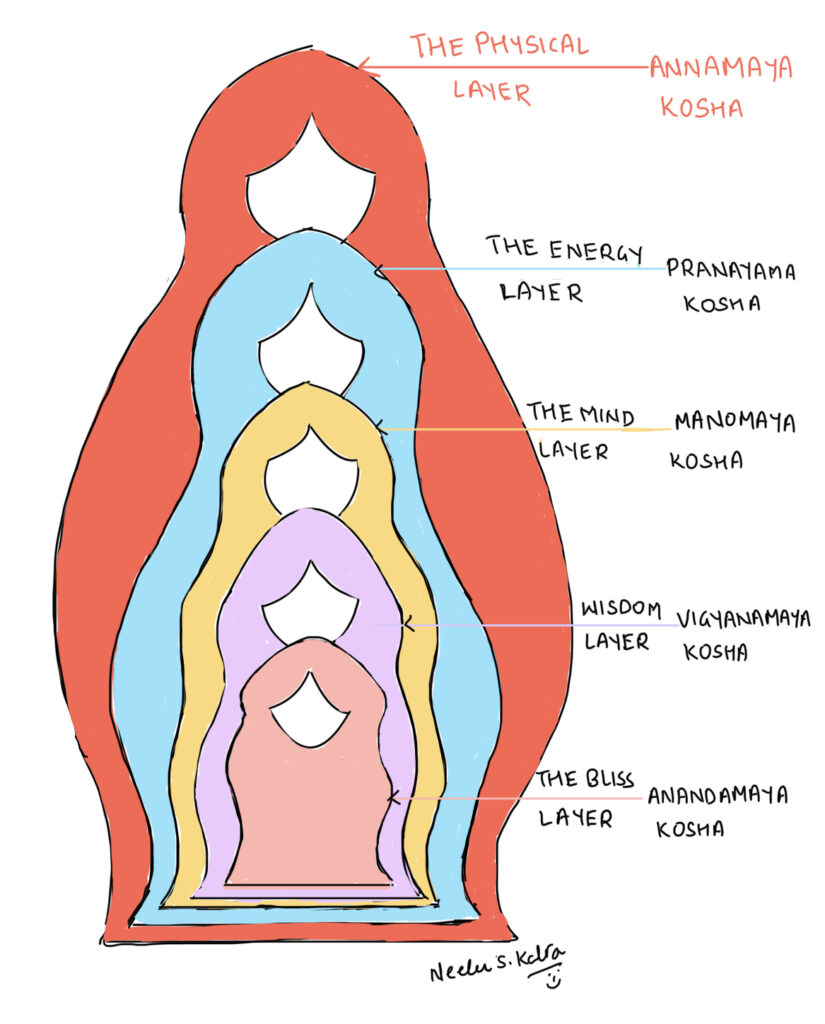
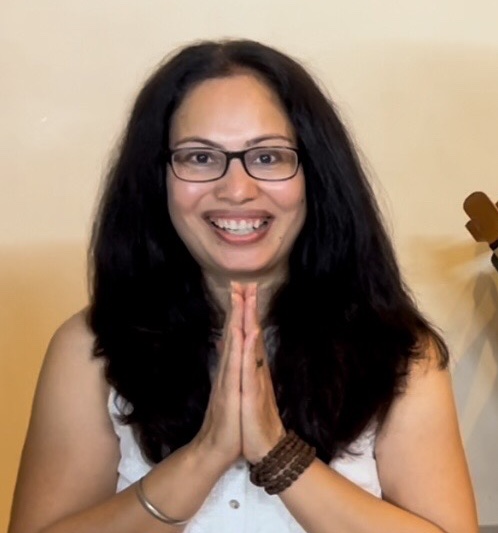






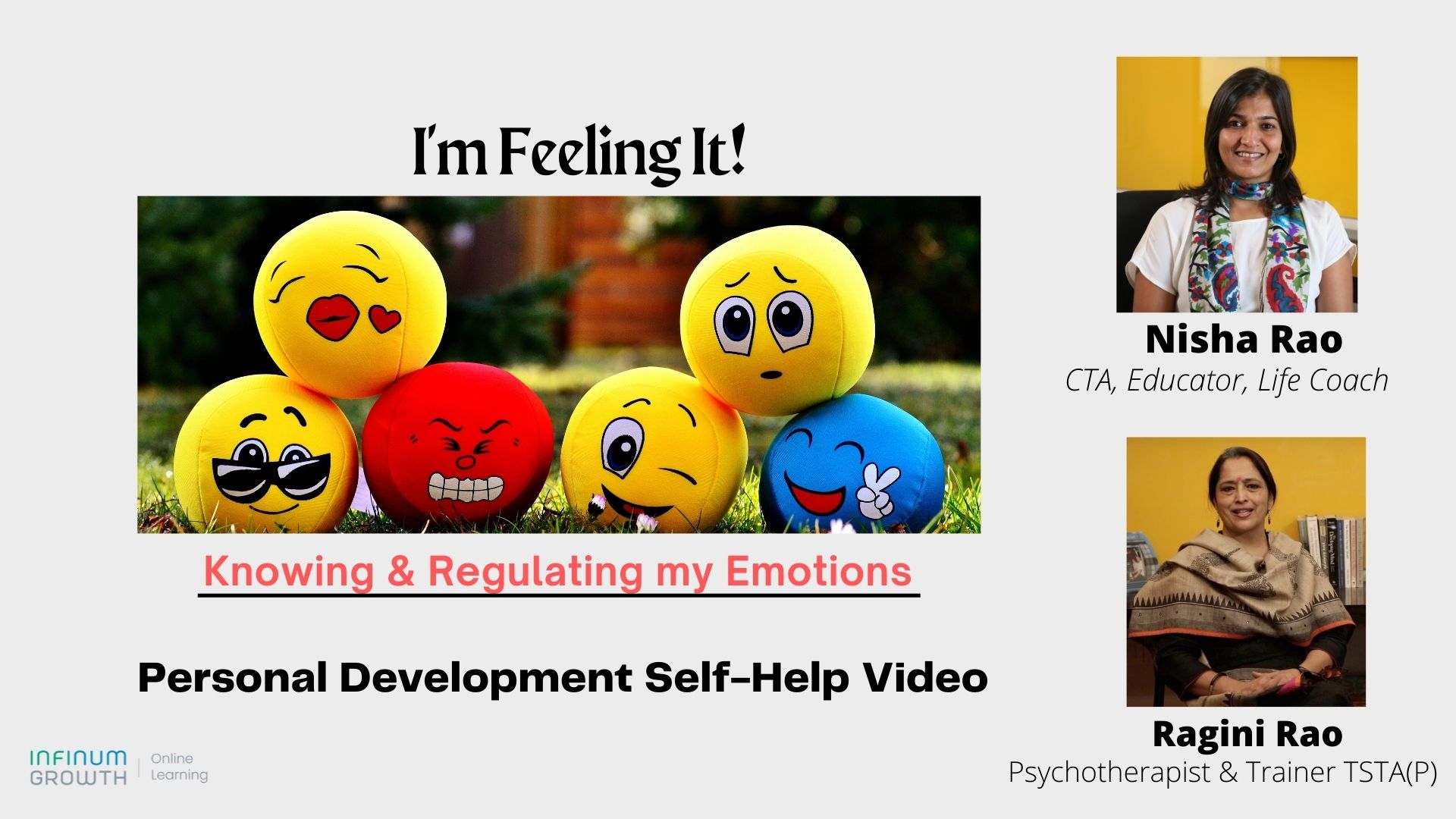


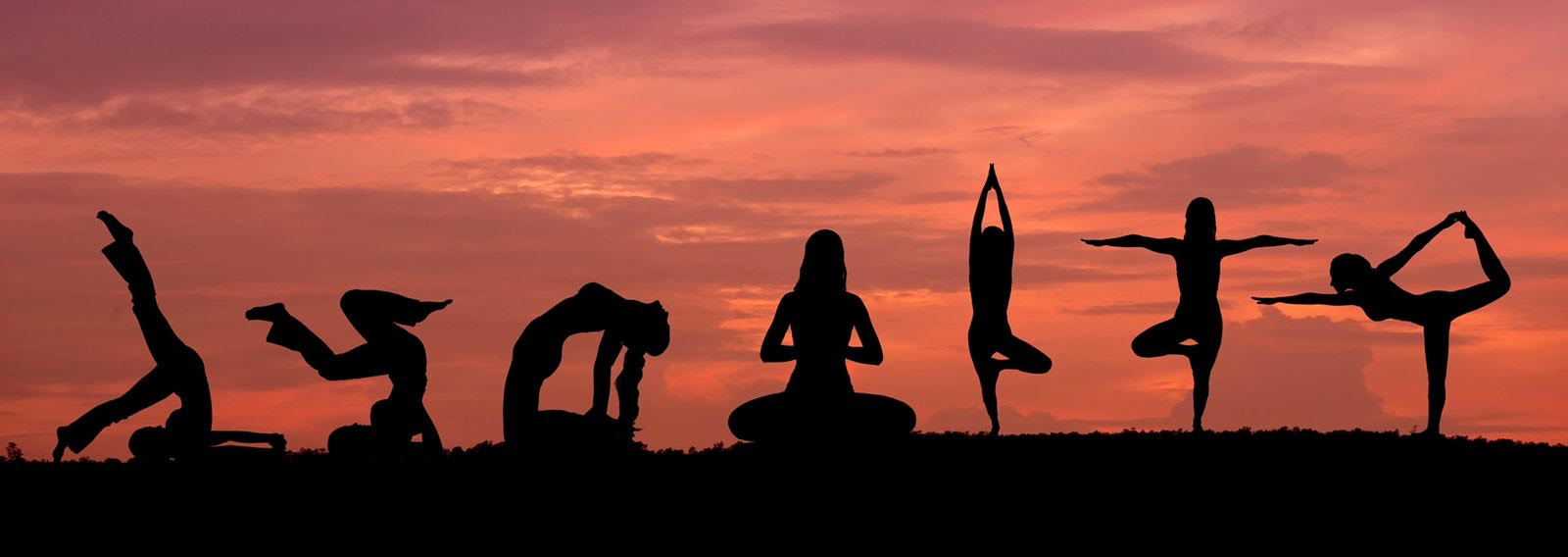

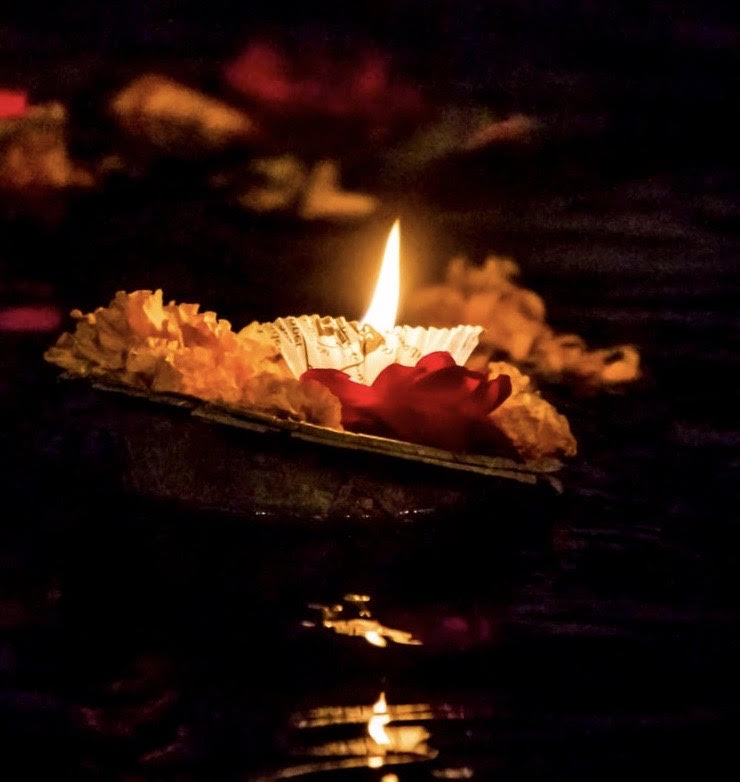
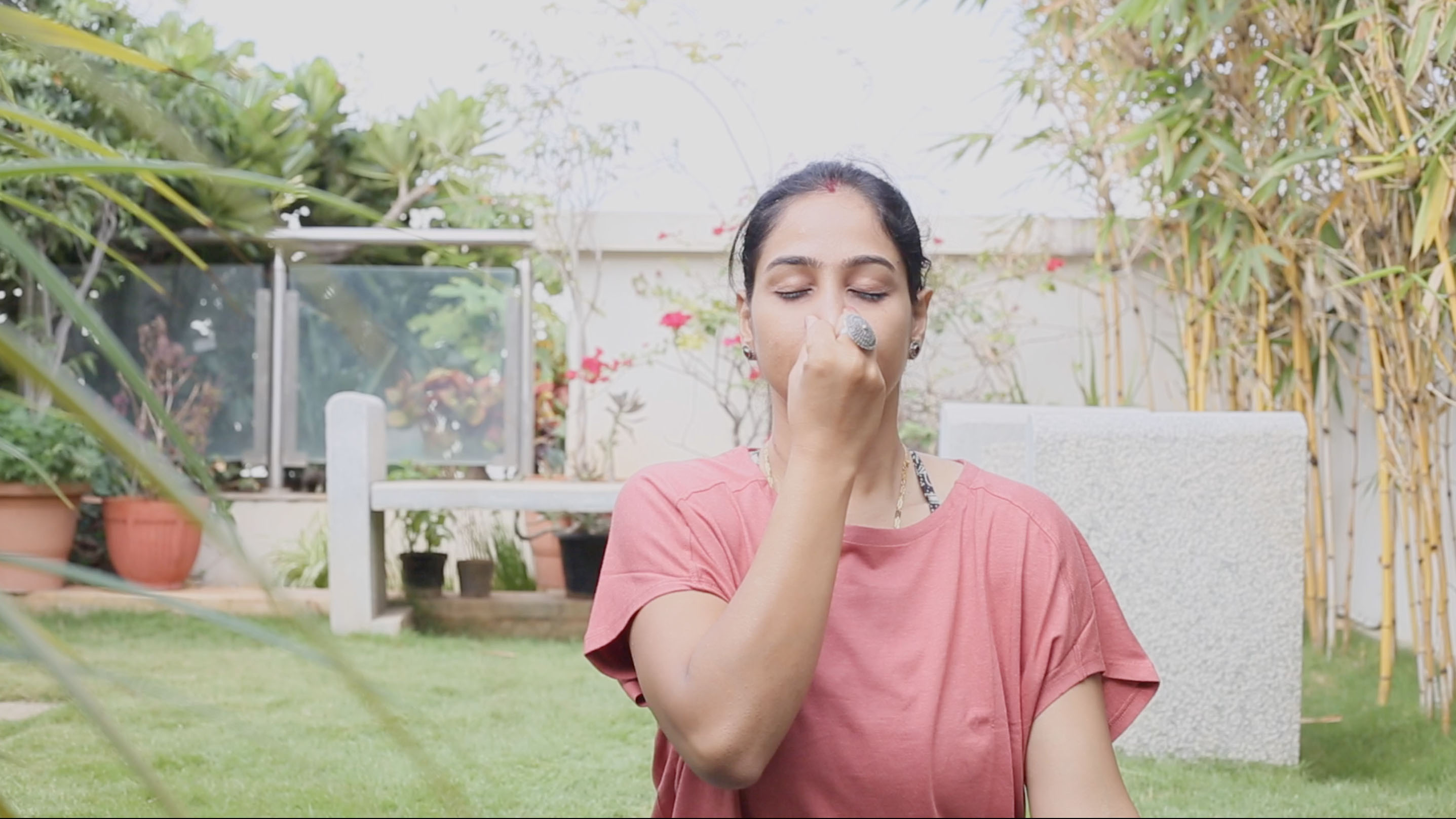


Very well explained 🙌🏻